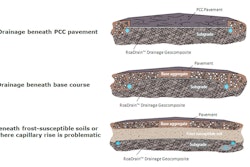
Nevada has the lowest number of deficient bridges in the nation, according to recent Federal Highway Administration (FHWA) data.
The data show that the state has a mere 36 deficient bridges, while most other states maintain hundreds or thousands of deficient bridges. The only other state with less than 100 deficient bridges is Delaware, with a grand total of 56.
Nevada’s deficient bridges comprise less than 8 percent of its total 1,972 public bridges.
Mark Elicegui, Chief Structures Engineer for the Nevada Department of Transportation (NDOT), says a number of factors help keep Nevada’s number so low.
Elicegui says the agency connects many bridge projects to paving projects.
Related: The State of the Nation’s Bridges
“A lot of our bridge maintenance work is incorporated into some of our paving projects,” Elicegui says. “When we have a maintenance project such as an overlay or a mill and fill big paving project — we’ve got long stretches of roadway in Nevada where we might do 20- or 30-mile projects — we’ll look at those projects and the bridges that are within those project limits, and we try and do our bridge preservation or bridge maintenance to an extent that’s practical on projects like that.”
Elicegui says federal funding is “a very significant part of our [bridge maintenance] program.” No specific figures are available about how much federal funding the agency uses to maintain its bridges, but Elicegui estimates “a minimum of 75 percent of our bridge preservation and maintenance activities are federal funds.”
He notes that NDOT was among the states to receive the minimum level of funding under SAFETEA-LU: about $12 million to $14 million annually.
“We’ve been trying to utilize about that same amount under MAP-21,” Elicegui says.
He adds that MAP-21 allows NDOT to expand the scope of the federal funds it receives.
“MAP-21 eliminated some of the specific set-asides for bridges with the exception of our off-system bridges, which is a really small amount,” Elicegui says. “So we always got a pretty small amount of federal funding for replacing, rehabilitating and maintaining bridges.”
“A little over 50 percent of our overall funding is federal,” he continues. “For example we get about $250 million a year in state fuel tax, and then we get about that same amount from the federal government.”
To maximize its funding, NDOT cuts costs in usually expensive areas such as painting, allowing the agency to use the saved funds on repair and other maintenance necessities.
“We try and utilize paint systems on our steel bridges so we don’t have to go back and repaint as part of our maintenance; that’s a pretty expensive proposition,” Elicegui says. “In some cases, we spend that money upfront to maybe buy longer life out of our paint systems on our steel bridges.”
Related: DOT report: $123.7 billion needed to maintain, improve highways, bridges
Elicegui points out that bridge age, along with the amount of bridges in the state, contribute to a low number of deficient bridges.
“We have a relatively small inventory,” Elicegui says
“The age of our bridges as a whole is younger than some of the states back east,” he continues. “A lot of our bridges were built in the 1960s and 1970s.”
The agency also has the climate in its favor. Elicegui notes that the climate is not as severe in Nevada as it is in northeastern states like New York, which has more than 2,000 deficient bridges.
“We have relatively low humidity and most of the state has milder temperatures, so we don’t see the deterioration like in our steel bridges that some of the states back east face with high humidity and extreme climates.”
For more details about NDOT’s bridge program, see the agency’s 2013 State Highway Preservation Report.











